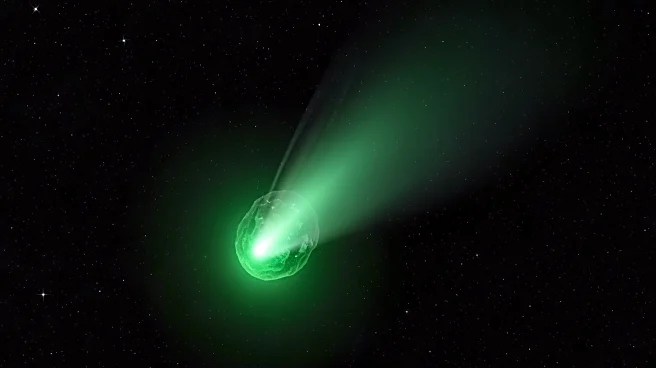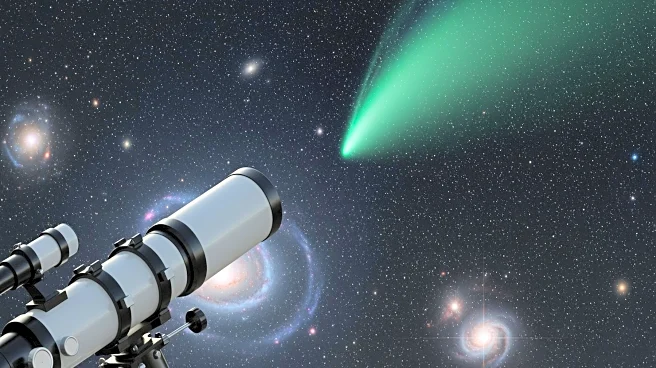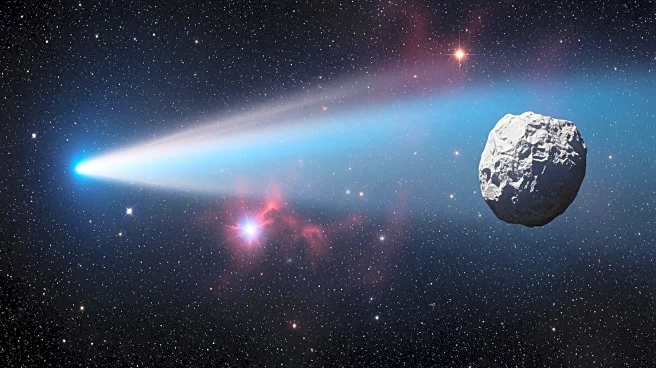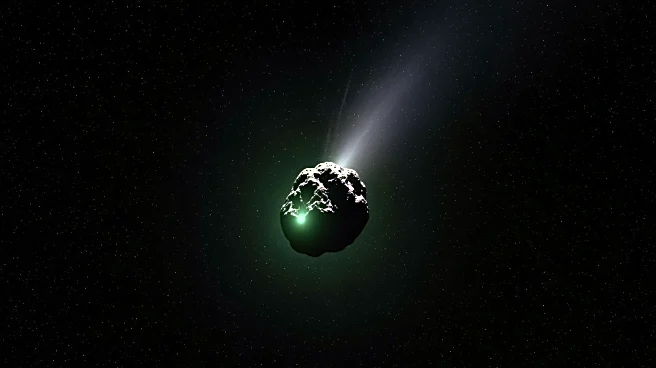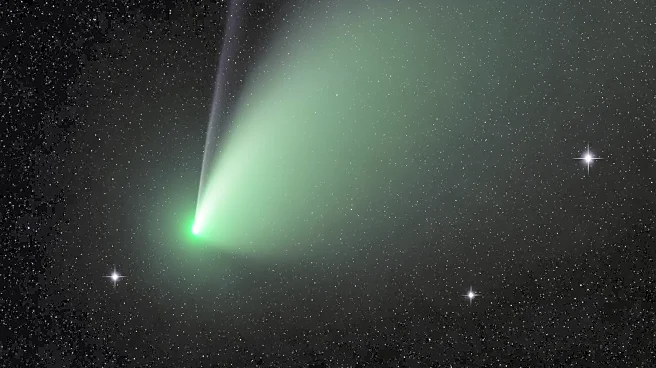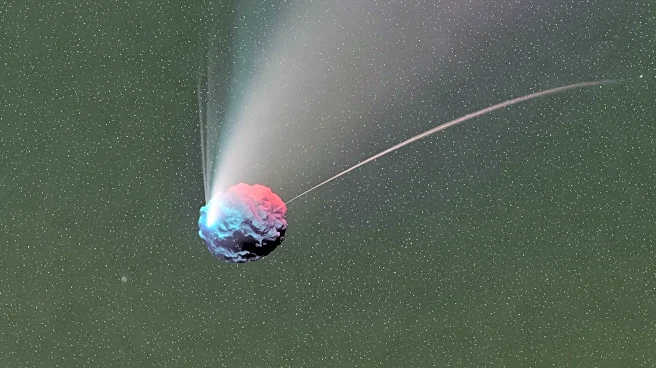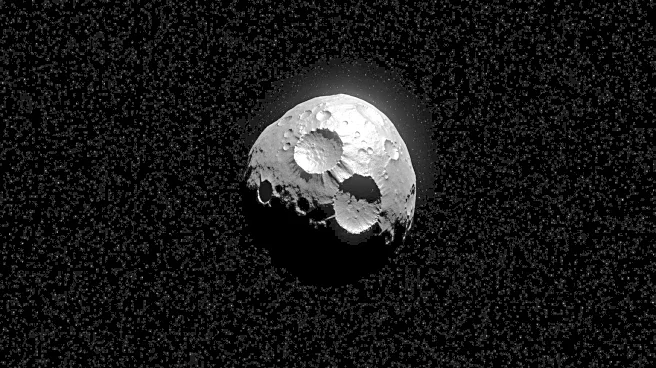What's Happening?
Comet 3I/ATLAS, an interstellar visitor, has been observed glowing green and seemingly hiding its tail in a new image captured by Qicheng Zhang at the Lowell Observatory in Arizona. The comet, which recently
became visible again after passing behind the sun, is exhibiting a bright green glow due to diatomic carbon particles. These particles are formed when ultraviolet light breaks apart hydrocarbons on the comet's surface. Despite appearing to lack a dust tail, the comet's tail is present but viewed head-on, making it less visible. Comet 3I/ATLAS is notable for being only the third interstellar comet recorded and potentially the oldest, with some studies suggesting it is around 3 billion years older than the solar system.
Why It's Important?
The observation of comet 3I/ATLAS is significant for astronomers as it provides a rare opportunity to study an interstellar object. Understanding the composition and behavior of such comets can offer insights into the materials and conditions present in other star systems. The comet's unique characteristics, such as its irradiated crust, may challenge scientists in determining its origins, but also provide valuable data on the effects of prolonged space radiation. This research could enhance knowledge of cometary science and contribute to broader astronomical studies, potentially impacting theories about the formation and evolution of celestial bodies.
What's Next?
Astronomers are expected to continue observing comet 3I/ATLAS as it moves away from the sun, with the potential for new findings on its composition and behavior. The comet's visibility from Earth allows for ongoing study using large telescopes, which could lead to discoveries about its gases and makeup. As the comet is now high enough above the horizon, more telescopes can participate in observations, increasing the likelihood of significant scientific advancements.
